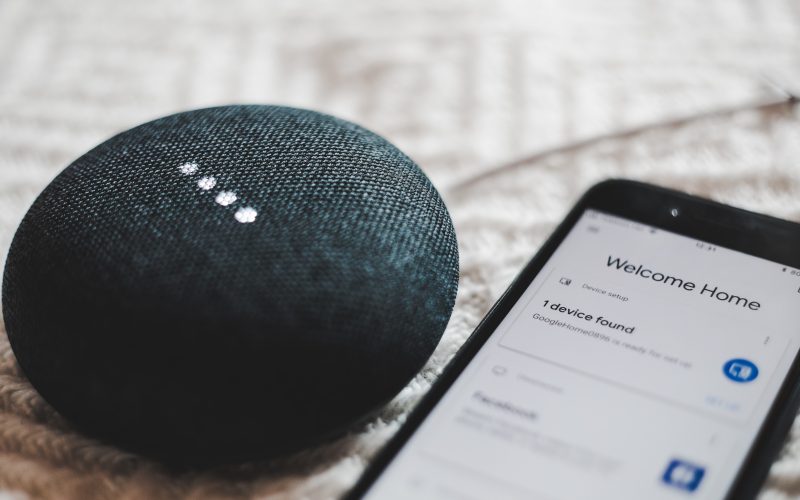The Smith family of David, Jessica, little Suzie, and little Tim enjoy their well-connected and technologically advanced home. David likes the fact that the smart lights save the family money on their energy bills, and Jessica likes it when the smart refrigerator warns her that a certain food is close to its expiration date. An Amazon Echo sits on the counter, allowing the family to jam to music every morning.
Little Suzie wears her smartwatch every day to track her steps for her fitness goals. Little Tim’s gaming console is his favorite belonging. David and Sarah enjoy the peace of mind their connected cameras and smart security system give them when they aren’t at home.
But every IoT device they enjoy — from their refrigerator to their watch to their gaming console — is another access point for a cyber attack to occur.
What is the Internet of Things (IoT)?
IoT stands for the Internet of Things, which is a term coined by Kevin Ashton in 1999. The term IoT is typically used for devices that now have an internet connection when they previously did not have one. This is why a computer or smartphone would not be called an IoT device despite both of them having an internet connection. These devices are able to communicate with the internet website independently of human action because of their internet connection.
IoT devices use embedded systems, like sensors, to take in information about the physical world and then use that information to perform an action. For example, some smart thermostats “learn” your heating and cooling preferences so they can automatically acclimate your smarthome’s temperature to your liking.
Here Are Examples of Different IoT Devices
- Amazon’s Echo
- Google home
- Smartwatches
- Fitness bands
- Smart refrigerators
- Smart fire alarms
- Smart door locks
- Medical sensors
- Smart security systems
These are not the only IoT devices out there, and worldwide spending on the IoT is only growing.
Are IoT Devices Secure?
The IoT presents many opportunities to make life more convenient but also creates security risks. Many times, the IoT devices in your home are collecting important and valuable data. For example, your Amazon Echo or Google Home is always listening. The smart security system around your home and family is always watching.
These actions are understandable if your IoT devices are secure and the information is only used for the devices to accommodate you. But if a malicious person intercepts that information, it could be at best unsettling and at worst, detrimental to you and your family.
Security in IoT means securing the Internet devices and the networks they are connected to from outside threats and data breaches. This is achieved by preventing risks and monitoring the security of your gathered data.
Unfortunately, the lack of security in the IoT has made headlines as a threat to people’s well-being. For example, researchers studying the security of children’s smart watches found that five out of the six smartwatch brands had serious security flaws. Hackers could track a child’s location, send voice and text messages to children that seemed to be from the parents, and record audio from the child’s surroundings.
This example is one of the hundreds out there. That’s why it’s crucial that households with IoT devices have a personal cybersecurity plan to keep families safe.
Strengths And Weaknesses For Security And Privacy In The IoT
Strengths
Recent publicity and awareness of the lack of security in IoT devices have led IoT device manufacturers to address security. Even governments are taking notice of how important security and privacy are in IoT devices. The UK government, for example, has published guidelines regarding the security of consumer IoT devices and took action to pass these guidelines as legislation.
Weaknesses
Though there have been some improvements made to security and privacy in the IoT, there is still much need for improvement.
Some IoT device security weaknesses include:
- Not being able to install security software on devices.
- Not being able to “patch” security vulnerabilities on devices.
- Some IoT devices come with malware pre-installed on them, infecting the network they are connected to.
These weaknesses reflect IoT devices not being made with security as one of the top priorities, which ultimately hurt the consumers. Many IoT device manufacturers also feel pressured to produce products as fast as possible to compete with demand and other products. All these weak points in IoT devices explain the shocking news headlines of people’s IoT devices being hacked by malicious actors.
Consequences of Insecure IoT Devices
The consequences of insecure IoT devices can be disastrous depending on the information they collect. For example, if your smart security system is not secure, a hacker could watch your daily habits and possibly use the camera footage as blackmail depending on what they record.
This is not a far-fetched possibility — it already happened. In 2019, a person hacked a Ring camera placed in an 8-year-old girl’s room. He verbally harassed and traumatized the child.
Think about all the private conversations you have in your household with the people you trust. Maybe you discussed paying the bills with a certain credit card and read the information out loud for your spouse to type in. These private conversations, if heard by an outsider, could lead to a dizzying number of problems down the road.
Some cyber criminals also do not simply gain access to one device. They could use vulnerable IoT devices to conduct DDoS attacks to take down online services. A DDoS attack is a distributed denial-of-service attack that disrupts the normal traffic of a targeted server. This can hinder your ability to access your network and connect to websites as you normally would.
Luckily, having a personal cybersecurity plan in place can protect you and your family from these issues. Agency, a cybersecurity company, offers comprehensive, business-level cybersecurity that prevents, monitors, and mediates problems if they were to arise.
For example, Agency provides devices with a VPN (virtual private network) connection. VPNs hide your IP address and protect your data. This makes it difficult for malicious actors to conduct DoS and DDoS attacks on you.
How To Get IoT Security On Your Devices
Gaining security on your IoT devices is a mix of safe practices and cybersecurity.
Some good practices include:
- Changing the default router settings.
- Disconnecting unnecessary or unused IoT devices.
- Picking strong, unique passwords for each of your IoT devices.
- Asking your guests to use a guest WiFi.
These practices make it harder for hackers to access your IoT devices or network. However, these precautions only go so far. Furthermore, in the case malicious actors do manage to gain unauthorized access, you can find yourself experiencing cyber attacks that threaten your livelihood and well-being.
Agency’s cybersecurity package includes Next-Gen Antivirus/EDR, active dark web monitoring, personal cyber coverage, and active security monitoring and response by U.S. cybersecurity professionals. These services typically cost $3,725 per year, but Agency offers them for $20 per month with the first month being free!
You don’t have to give up your smartwatch or smart security systems in the fear of experiencing a cyber attack. By following these preventative, tech-safe practices and having cybersecurity, you can enjoy convenient IoT devices worry-free.







